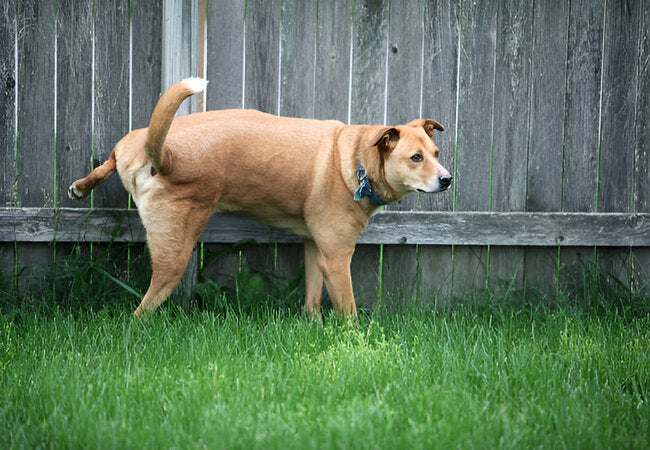Why Dogs Lift Their Leg to Pee in 2025 – Vet‑Approved Guide to Canine Marking & Posture 🚶🐾

In this article
Why Dogs Lift Their Leg to Pee in 2025 – Vet‑Approved Guide to Canine Marking & Posture 🚶🐾
By Dr. Duncan Houston BVSc
When a dog lifts a leg to pee, it's more than a quirky posture—it’s a purposeful act of communication. In this 2025 vet‑approved guide, we'll unpack the science and instincts behind leg lifting, how it varies by sex, age, size, and health, and what it means for your dog—and when it might signal a need for veterinary attention. 🐕
1. Urination Has Two Purposes
- Waste elimination: clearing excess fluids from the body.
- Territory marking: depositing scented signals that convey sex, identity, status—and even bluffing presence 👃. This is the main reason dogs adopt upright leg‑lift or “racehorse” stances.
2. Male vs Female Patterns
- Male dogs: typically begin squatting as puppies, transitioning to leg lifting as they reach sexual maturity (≈6–12 months depending on breed)—a shift driven by an instinct to mark more efficiently.
- Female dogs: usually squat, but may adopt a “squat‑raise” or full leg lift when marking territory or signaling heat.
3. How It Works
Lifting a leg helps direct urine onto more prominent vertical objects like trees or hydrants—these dry quickly and hold scent longer. Higher placement also hints at stature to other dogs. Small dogs often lift higher to “appear bigger”.
4. Age, Size & Evolution of Posture
- Puppies/young dogs: squat or use racehorse stance.
- Adolescents: often start experimenting with leg lifting.
- Adult & mature males: leg lift becomes dominant marking posture.
- Senior or arthritic dogs: may revert to squatting if uncomfortable balancing on three legs.
5. Is Lifting Always a Good Sign?
Leg lifting is normal, but changes may be medically significant:
- Painful conditions (arthritis, hip/knee issues) may lead to squatting over leg lifting.
- New or altered urination posture—especially with straining, frequent trips, or blood—warrants a veterinary check.
6. Why Size & Social Context Matter
Smaller male dogs may lift higher to signal higher rank and presence to rivals. Research at Cornell confirms little dogs lift more aggressively than large breeds—as a bluff or signal.
7. When Females Mark with Leg Lifts
- Females may lift during heat cycles to communicate mating readiness.
- Outside home territory, females may adopt squat‑raise to scent‑mark objects.
8. Training & Notice for Owners
- Lifting in the yard is natural and reflection of their communication system.
- To prevent unwanted marking on vertical surfaces: gently redirect your dog away from posts/doors, or train them to only eliminate on grass.
9. Medical & Behavioral Watch Points
If your dog shows changes in urinary posture, elimination frequency, or signs of discomfort—consult a vet. It may indicate:
- Urinary tract infection, bladder stones, or obstruction.
- Joint pain, arthritis, injury affecting stance.
- Behavioral stress or marking issues in multi-dog households.
10. FAQs
- My male dog still squats—is something wrong?
- No—some male dogs prefer squatting due to comfort or temperament; leg lifting isn’t mandatory.
- Can neutering stop leg lifting?
- Neutering before maturity can reduce marking behavior, but habit learned later may persist despite hormonal changes.
- Is leg lifting harmful?
- No—it's natural. Only act if there's pain, strain, blood, or marking indoors.
11. 📱 Ask A Vet App 2025 Support
Use the Ask A Vet app to:
- 📹 Upload video of urination posture or behavior for expert vet review.
- 🧩 Receive guidance on training cues and marking behavior corrections.
- 💬 Consult on joint health, urinary issues, or changes in posture.
Quick support helps confirm normal behavior or flag potential health concerns—keeping your dog healthy and comfortable. 🐾📲
❤️ Final Thoughts
Leg lifting when peeing is an ancient canine behavior—rooted in marking and communication. It's instinctive, purposeful, and rarely problematic. Small dogs may exaggerate to project size, females may lift to communicate heat, and changes can signal health issues. In 2025, our role is to understand, observe, and support—using training and vet care when needed—so our dogs can pee and communicate with confidence, health, and dignity. 🚶🐾
Questions or concerns? Visit AskAVet.com or download the Ask A Vet app to chat with a vet about your dog's posture, marking habits, or urinary health.






